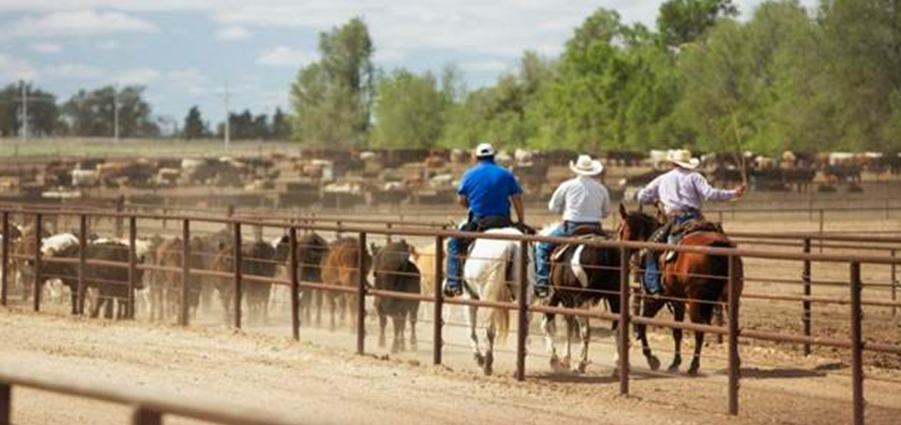



Lighten workloads, pack on pounds: Tips for performance success at the feedlot
You go to work well before sunup, and you don’t hang up your hat until after sundown. But with so much to get done, hours in the feedyard click by in a hot minute. Cattle are constantly moving — feeder cattle coming in, market cattle shipping out. Your list continues, from processing 100-plus head at the chute to moving and checking on cattle that could be miles from the operation where you’re standing now.It is more important now than ever for feedlot operators to take advantage of every tool and technology available to increase overall gain and to improve labour efficiencies and operational flexibility.
When it comes to evaluating a feedlot’s performance and average daily gain goals, Richard Zinn, PhD, renowned researcher and animal science professor at the University of California, Davis, closely examines four things. “I would first look at the implant program — that’s No. 1. No tool has a greater impact on average daily gain and gain efficiency than the implant, so this is an area that feedlots should pay very close attention to. And then the use of feed additives, feeding management and the effective fibre content of the diet.”
While there are many implant options available to cattlemen, using a long-acting implant can be more sensible than traditional implants, which often require re-implanting to get the same duration.
Long-duration implants can help cattle producers:
Find more time in the day. There’s not enough time in the day to go back and redo anything, especially re implanting cattle. Consider 1,000 head. Let’s assume that it takes seven minutes per animal to bring them through the chute to re-implant. This task alone could mean more than 100 hours spent re-implanting cattle, which could add up to $1,222 per employee in hourly wage costs.1 Could that time have been put to better use?
Improve labor efficiencies. If asked your biggest pain point, “labour” might top the list — high turnover rates, unreliability, finding enough help when you need it most. Imagine if you only had to implant cattle once every 200 days. How would you utilise the extra time and resources?
Reduce risk of injury. One of the major sources of employee injury in the industry can be attributed to handling livestock.2 Implanting lighter-weight cattle upon arrival at the feedlot is safer than the risk of running a 1,000-pound animal through the chute to re-implant later in the feeding cycle. If you could reduce the risk of injury by not re-implanting and handling cattle less, why wouldn’t you do it?
“The implant program is extremely important,” Zinn said.
Synovex® One Feedlot provides producers a long-duration implant option that is approved for use with both steers and heifers, offering 200 days of uninterrupted performance — nearly twice the duration of conventional implants. Compared with nonimplanted feeder cattle, steers implanted with Synovex One Feedlot saw a 15.4% improvement in average daily gain and 9.8% improvement in feed efficiency. Also when compared with nonimplanted feeder cattle, heifers receiving Synovex One Feedlot demonstrated a 12% increase in average daily gain and a 7% improvement in feed efficiency.3
Dr. Zinn recommends that feedlots experiencing decreased feed intake should also look at current feed additive programs to help enhance performance and implement changes if needed.
“When I see a feedlot where the intake is off, then we’re going to look at the feed additive program and try to determine if they’re optimising the potential of various feed additives to enhance performance,” Zinn said. “The important thing in the feedlot is to maximise average daily gain, and by doing that, they maximise net return.”
Implementing animal health technologies can help your operation run more efficiently, helping guarantee improved performance and profits. For more information on increasing feedlot performance, please contact your Zoetis representative or visit GrowWithSYNOVEX.com and CattleFeedAdditives.com.
Do not use SYNOVEX products in veal calves. Refer to label for complete directions for use, precautions, and warnings.
About Zoetis
Zoetis is the leading animal health company, dedicated to supporting its customers and their businesses. Building on more than 60 years of experience in animal health, Zoetis discovers, develops, manufactures and markets veterinary vaccines and medicines, complemented by diagnostic products, genetic tests, biodevices and a range of services. Zoetis serves veterinarians, livestock producers and people who raise and care for farm and companion animals with sales of its products in more than 100 countries. In 2016, the company generated annual revenue of $4.9 billion with approximately 9,000 employees. For more information, visit www.zoetisUS.com.
| TheCattleSite News Desk | Read more Zoetis News here |




